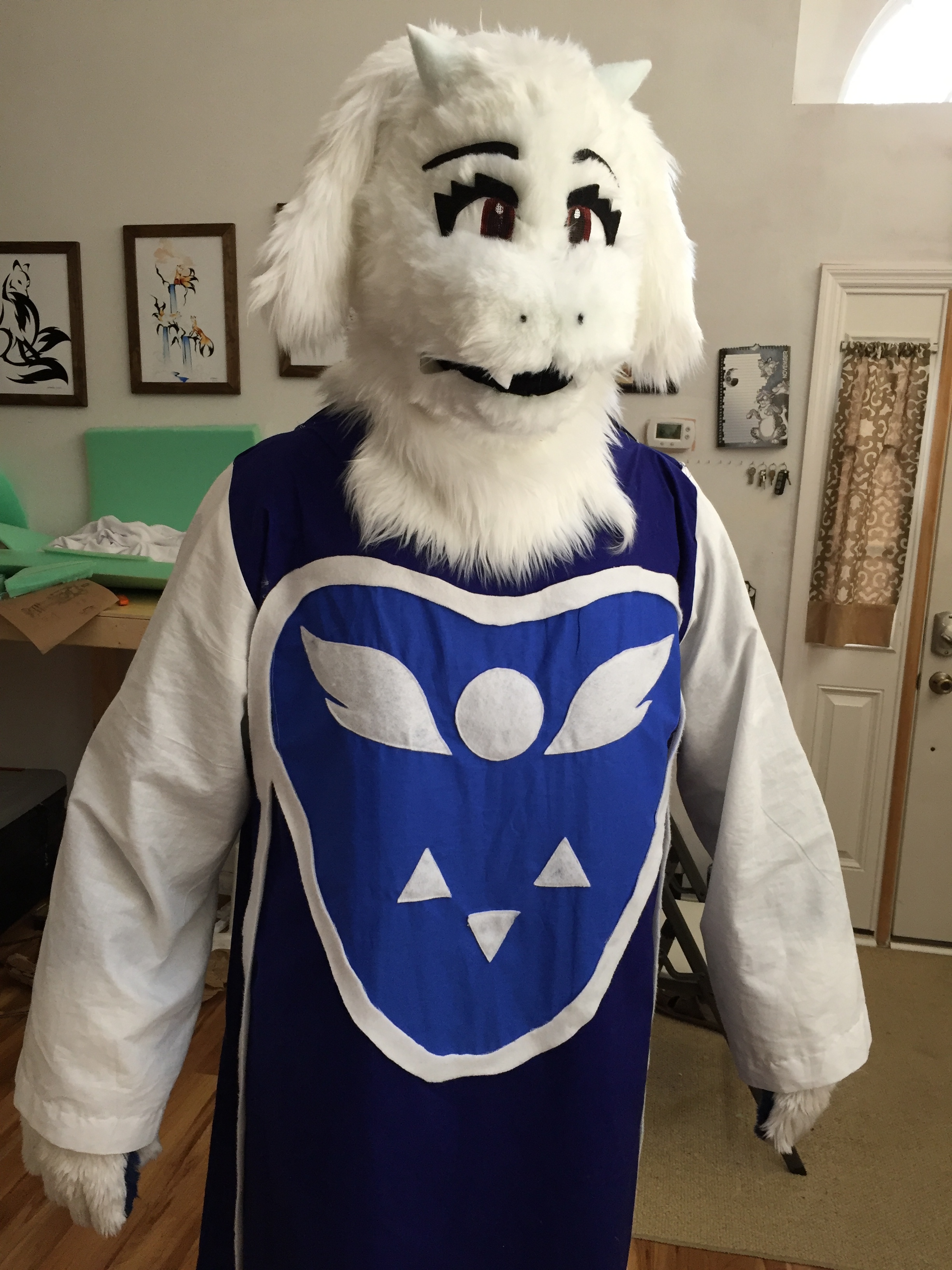How to Toriel Tutorial
Ladies and gentleladies: the trough has ended. And in such fashion! I've got a partial suit of Toriel, constructed in a bullheaded fervor over the course of 4 days.






It's already taken me 6 months to get a Zaethro Mark 2 prototype out the door. That project is self-defining in a way that makes working on it emotionally difficult in addition to the technical challenge. But suppose we stripped out the identity part: what could I accomplish without the constraint of my creation being so personal?
At around dusk on the 27th, I had just finished Undertale, was still kinda jetlagged from October's sloth, and needed a Halloween costume before a party on the 30th. Those three lines converged with this identity question to spawn this 4-day challenge. I set my sights on Toriel, the overprotective mother figure from Undertale, and basically didn't look away until the party.
The time-lapse I took of this whole affair isn't all that well shot nor is it terribly informative about the particulars of the process. I was preoccupied putting every free moment I could extract from the week into completing her. It took every minute I had, as well. While I did get the head and the dress done, I had to use Zaethro's hands and feet. Nonetheless, I got the meat of the project resolved, and that felt really, really good after a month of slacking off.
"Four days" makes this sound like it took no time at all, but I think the videos below do a fair job showing just how much time that really is if you crank down and work for the duration. There's at least 30 hours of production captured in this footage. You can get a lot done in 30 nose-to-the-grindstone hours.
And yet, this still feels like a profoundly fortunate achievement. I basically made a partial fursuit over a span of time equal to a convention. Despite making many littler mistakes along the way, I never really got stuck a thousand times the way you normally would in a creative endeavor of this scale. I've been trying to distill what made this project flow so well. Here's what I've concluded:
- Don't take breaks on a schedule--only take them when you need them. If you start segmenting your time deliberately between work and rest, your brain will see the breaks as a reward and interfere with your workflow to get more of them. The product of the work should be the reward, not the recuperation periods.
- Have materials on hand. Because I've built a fursuit before, the only stuff I had to go buy for this project was cloth for the dress. This made transitioning between steps as fluid as possible. Not taking trips to the store not only saved time but kept me from "rewarding" myself with breaks.
- Have a friend in the loop. I'm not about to discount my luck in having a semi-pro artist (Dillon) on hand for projects like this, but most of the time Dillon's expertise isn't what makes his presence valuable: it's independent appraisal. You don't have to be terribly skilled to tell when something is off...Lord knows we are all masters of snap judgments. The only thing that makes this hard is being the creator. Stepping back far enough from your own creations to judge them is tough; friends have no such issue. Make sure somebody is checking your work regularly, even just with a glance or a screenshot. If you're afraid of what your friend might think of you during these judgment calls, you are probably trying to hide the very inadequacies this project aims to improve, which helps no one. You can combat this feeling by involving them in the project more directly or by offering to do the same for them if they've got something going on as well. If this doesn't work, consider the possibility that your friend sucks and that you should maybe pick someone else for this role.
- Only do research to complete a task. I needed to look up a variety of things while assembling Toriel, but I never resorted to outside help until I'd given a problem my best (and second best) shot. It is important to get stuck first so you understand what you are really trying to solve. If you don't do this, you'll end up in the internet how-to cloud, appraising dozens of potentially valid methods for how to proceed and you'll never commit to one of them. Worse, you'll probably feel as if that research is itself productive. It's not. Do the thing.
- Keep it impersonal. I mentioned this one earlier, but I think it was absolutely critical I don't own Toriel in any real sense. That prevents artistic self-definition from creeping in, which only leaves technical aspects to be judged, and improving those is much more straightforward than trying to make something reflect your inner motives better. In the cosplay world, furries tend to be the only ones who suffer from this particular self-definition problem, but in other fields of production this is more globally important.
- Explore unknown (or largely unknown) territory. There are effectively three pixelated sprites of Toriel in the whole of Undertale. This lack of reference material has probably deterred quite a few people from even trying to make a full costume for her. Ironically, I found that necessity for artistic license (in conjunction with a lack of other cosplayers to judge her against) very helpful in pressing forward. Judging whether something looked "good enough" was a lot easier when the only real measuring stick was my (or Dillon's) gut reaction. The feeling of being a trailblazer also helps a great deal.
That's seems like enough lessons learned. I'm happy. Now I just have find something else to work on.
Imperfect, but good enough.










